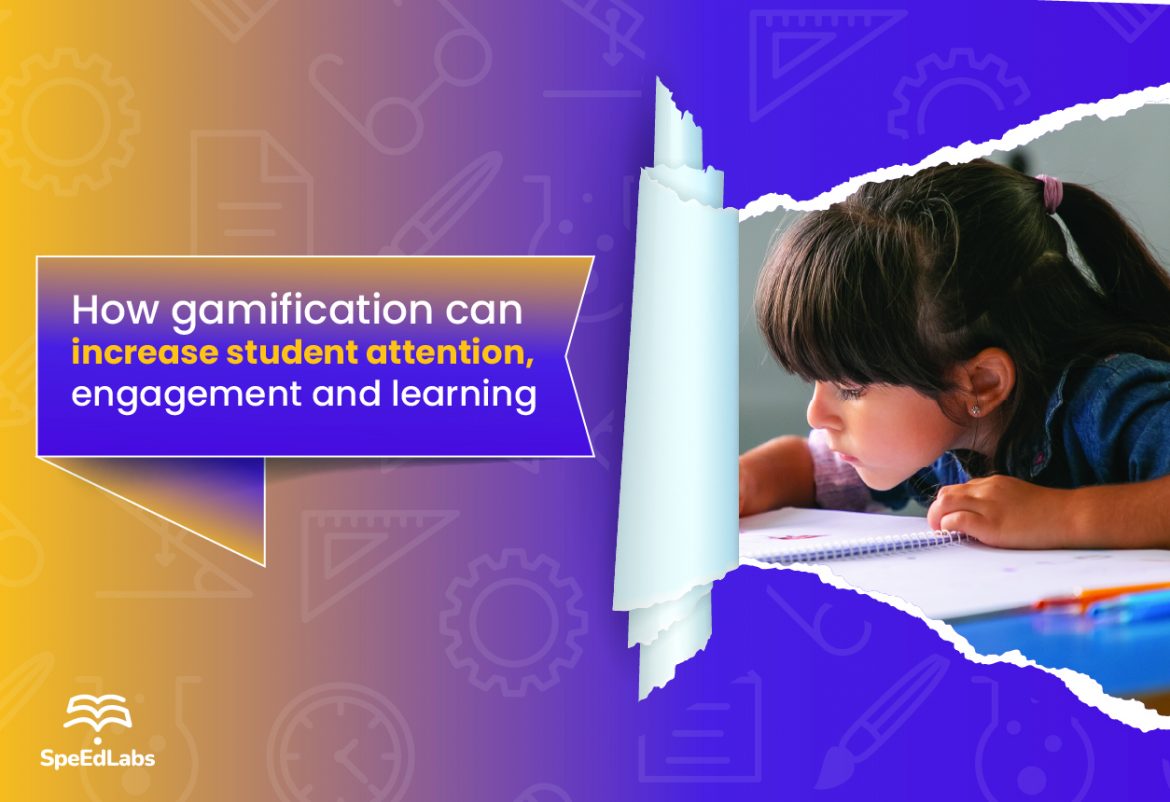What if we tell you there is a way to motivate learning, increase attention and reduce stress!
What is gamification?
The gamification of learning is an educational approach that motivates students to learn by playing several video games that includes game elements such as points, rewards, levels, challenges, score, XPs, etc. The objective is to maximize enjoyment and engagement by capturing the interest of learners and inspiring them to continue learning.
Gamification is a powerful motivational tool that turns a Physical Education subject matter into a real-life video which in turn helps students achieve many goals, learning by doing, collecting several game points and items to maximize student engagement and keep them intrinsically and extensively motivated.
In this article, we will discuss how gamification can increase student attention, engagement, and learning it’s becoming more and more popular with the emerging needs of society. is everywhere and
How does Gamification work?
Let’s be honest, kids despise learning but they enjoy playing games and would not mind sacrificing their sleep just to earn some rewards, points, or unlocking some new levels.
So just think, how great it would be if we could make learning fun just like games?
Each time you receive a reward from an educational game, your brain releases the dopamine that makes you feel good, lets you earn more rewards, and motivates you to learn more.
Some of the elements of Gamification are:
- Score and XPs-Gamification use points and XPS to develop a reward-based training system points where students earn points for every effort made. This cumulative method of marking is more efficient than the traditional method as earning points in each evaluation is more rewarding.
- The levels and challenges-This method uses the levels and challenges to define a learner’s journey. It starts with the basic concepts of the subject and simple tasks, and gradually increases the difficulty level as the student progresses towards the higher levels.
- Leader boards-Leader boards are a game-changer in the world of gamification as everyone wants to see their name on the top. This is the reason every addictive game has the feature of leader boards in it. Utilizing the leader board feature in the educational games will encourage the students to work harder just to see their names on the top.
Why Gamify?
Let’s talk about how gamification can increase student attention, engagement, and learning:
- Empowering students: Gamification involves recognition of students by adopting various game elements such as rewarding students with badges, certificates, and trophies for their efforts. This empowers and encourages a student to believe in himself.
- Packed with motivation: Gamification builds motivation for students. Their abilities and efforts will determine their success using this strategy. Remember, no one likes to lose and the desire to win motivates the students in the right direction.
- Trying is fun: Solving and trying new problems every day is no more tiresome. Trying now is fun rather than overwhelming.
- Attending classes: Gamification creates curiosity among the students to learn about different concepts in practical life. Thus, making them attend their classes and solve real-time problems.
- Focusing on meaningful learning tasks: Gamification helps students to pay attention to real-life problems, by making a subject easier to understand. This way students can apply the book concepts practically.
- Taking Initiative: Gamification enables the learners to solve problems by achieving more rewards and points. This boosts the confidence of learners, making them ready for difficult challenges and problems.
- Keeps the learner occupied: Gamification keeps the learner busy by encouraging him to learn more and more. The ‘leader board’ feature of the game helps keep the students consistent throughout the learning process.
- AI-enabled guidance: The AI-enabled gamification of a subject allows students to learn at their own pace.
- Free from judgment: Many teachers still shame students for their poor grades and low performance. Gamification has changed the game of learning as students can learn while playing, without being judged.
- Self-Evaluation: Self-Evaluation is the biggest evaluation. Students come to know about their strengths and weaknesses and they can work on them accordingly.
- The best practice tool: Gamification is the best practice tool through which students learn by unlocking new levels, and winning new rewards. Students can improve their learning by practising a certain concept by completing different challenges in the game.
- Zeal to learn more: The traditional learning method can be boring for some students. Learning through Gamification Is so much more interesting as it makes learning irresistible in a whole new way!
Gamification sounds cool but does it improve the learning process?
Check out these numbers:
‘BEATtheGMAT’ community saw 370% higher user engagement by choosing the gamification system. The Delloite Academy saw a 46% increase in user attention using game mechanics on the platform.
Many E-Learning platforms have also achieved massive success through Gamification. Platforms like Duolingo gamified language learning which has over 300 million learners.
Key Takeaways
From the above article, we can say that Gamification is the future of learning which benefits both teachers and students. We need proper strategy and implementation to develop the gamification mechanism in all the sectors, especially Edtech. Gamification-based learning has the potential to make education fun for the new generation of students.
Also published on Medium.
